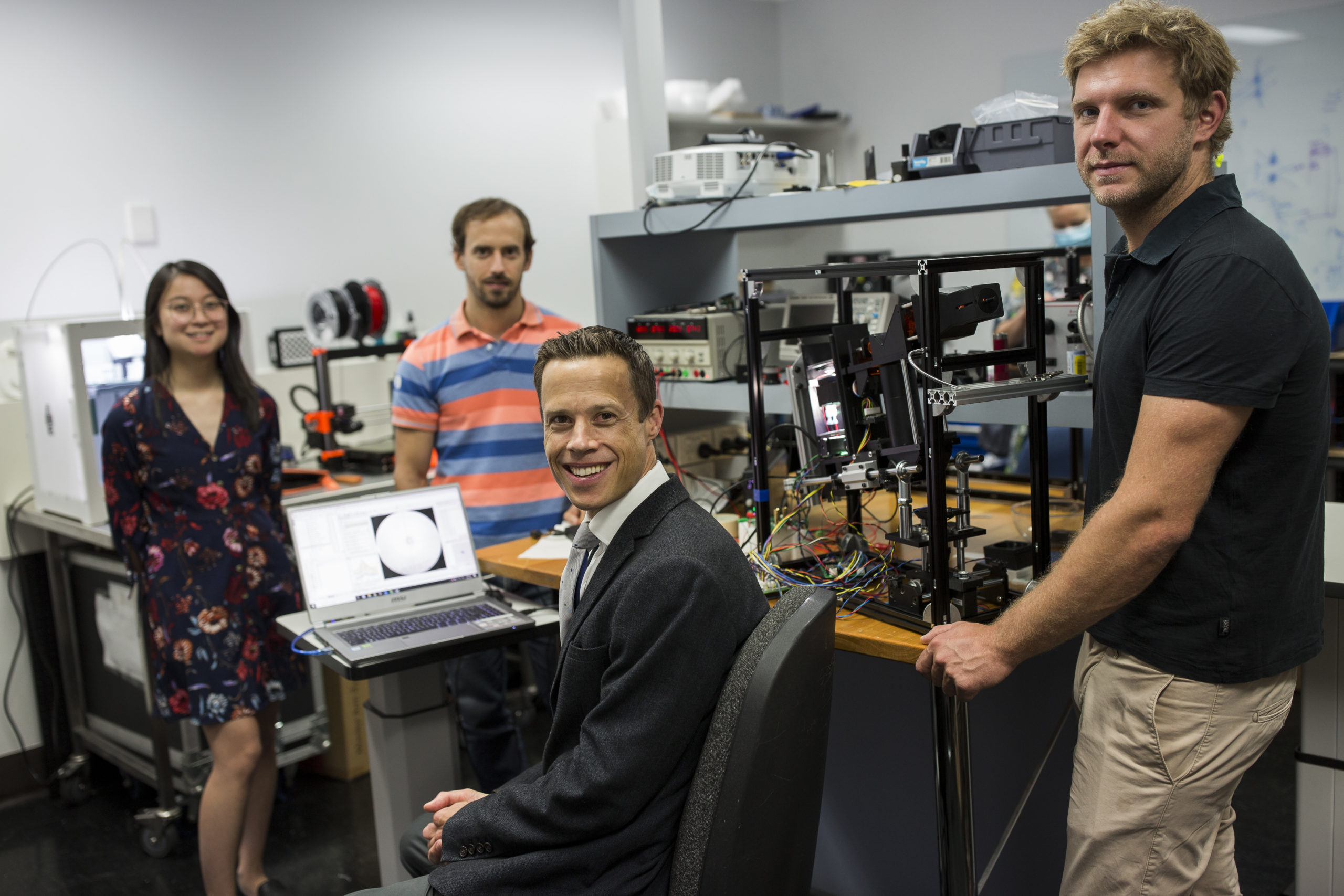This website uses cookies so that we can provide you with the best user experience possible. Cookie information is stored in your browser and performs functions such as recognising you when you return to our website and helping our team to understand which sections of the website you find most interesting and useful.
News
Global brainstorm to identify Alzheimer’s disease risk
CERA researchers have added international firepower to their quest to detect the early warning signs of Alzheimer’s disease.
A new international collaboration will accelerate research into the use of eye scans to identify people at risk of developing Alzheimer’s disease.
Global collaboration
The BRAINSTORM consortium, led by CERA’s Associate Professor Peter van Wijngaarden, unites international experts in brain pathology and imaging, ophthalmology and artificial intelligence.
The group aims to use eye scans to accurately pinpoint early changes in the retina that suggest someone is at risk of developing Alzheimer’s disease.
Associate Professor van Wijngaarden says researchers hope to develop an early detection method for people at risk of the disease, to pave the way for new treatments and hopefully a cure.
“Changes in the brain caused by Alzheimer’s disease can occur up to 30 years before the onset of memory problems, and there is an increasing focus on treatments to prevent or delay the disease,” he says.
“But current tests to diagnose Alzheimer’s disease – like PET scans and lumbar punctures – are invasive, expensive and not suitable for widespread screening programs.
“Their limited availability makes testing of new treatments much more difficult and slows down research to find new therapies.
“Access to a simple, inexpensive and noninvasive eye test could allow us to determine who is most at risk, and completely transform our approach to diagnosing, preventing and treating Alzheimer’s disease.”

Scientists unite
BRAINSTORM unites scientists from CERA, KU Leuven University, Belgium and Umeå University, Sweden and collaborators from University College, London.
The Victorian Brain Bank at the Florey Institute of Neuroscience and Mental Health and Lions Eye Donation Service will also be involved – providing tissues generously donated by people with Alzheimer’s disease and neuropathological diagnosis in an effort to advance the detection and treatment of the disease.
The team will be funded over the next three years by Australia’s National Health and Medical Research Council and the European Union’s Joint Programme in Neurodegenerative Disease Research.
Their support for the project recognises how international collaborations drive advances in health and medical research, accelerating progress by pooling skills and resources, and reducing duplication.
The project will also provide opportunities for two talented PhD students to contribute to the research and receive joint testamurs from the University of Melbourne and KU Leuven.
These scholarships are funded separately by the two universities to celebrate and cultivate academic collaborations between these two leading institutions.
The international group will build on the CERA team’s work to use hyperspectral imaging to identify early retinal changes that suggest someone is a risk of Alzheimer’s disease.
Powerful impact
“By working together we can have bigger impact than just one group working alone,” says Associate Professor van Wijngaarden.
The research has developed over many years thanks to the generous support from: the Yulgilbar Alzheimer’s Research Program, the Pratt Foundation, H & L Hecht Trust, Joan Margaret Ponting Trust, Anne & Eldon Foote Trust, The Mason Foundation and National Foundation for Medical Research and Innovation, Cooper’s Brewery Foundation, Michael Halperin, Steve Frisken and the Alzheimer’s Drug Discovery Foundation.
*This story first appeared in the CERA Annual Review for 2020.

